ROUGH DIAMONDS
COLOURLESS DIAMONDS
Colourless Diamonds are amongst the most popular Diamonds found in jewellery, however, in extremely scarce instances they are found in exceptional sizes and clarity. Additionally, Type IIA Diamonds make up less than 1-2% of all natural diamonds and are amongst the most chemically pure form of diamonds with outstanding transparency.

A 50 carat rough diamond from South Africa
OUR FANCY DIAMONDS
Fancy coloured diamonds are even more rare than colourless diamonds and are highly sought out as long term investments and collector items.
BLUE
Blue diamonds contain a trace element of boron which gives them their unique blue hue. There are only a few select sources where they have been found – one of which is the world renowned Cullinan Mine where the Blue Moon was unearthed and bought by us on behalf of our clients.
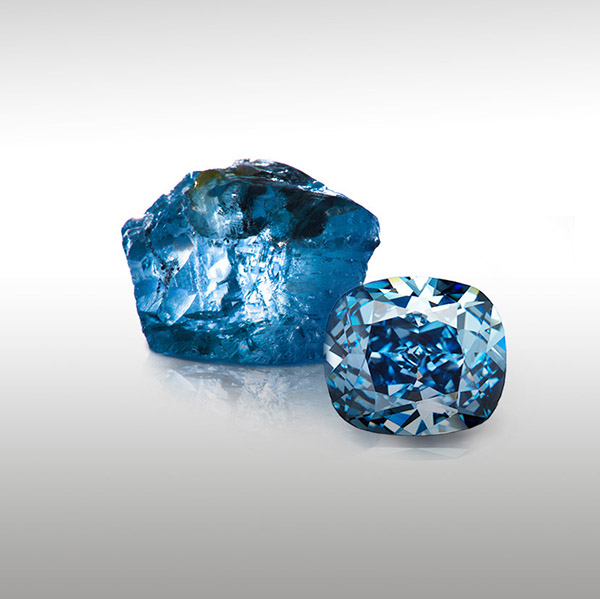
Credit to The Jewellery Editor www.thejewelleryeditor.com/
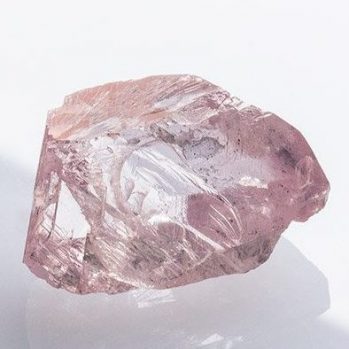
Credit to Petra Diamonds www.petradiamonds.com
PINK
Pink diamonds owe their colour to a deformation in the crystal lattice structure of the diamond. This commonly causes a clarity characteristic called internal graining. As a result, pink diamonds with a high clarity are extremely rare.
PINK
Pink diamonds owe their colour to a deformation in the crystal lattice structure of the diamond. This commonly causes a clarity characteristic called internal graining. As a result, pink diamonds with a high clarity are extremely rare.

Credit to Petra Diamonds www.petradiamonds.com
PINK
The KAO purple princess was recovered from KAO mine in Lesotho as a 3.11 ct that went down to 3.06cts after it was boiled.
The KAO purple princess was recovered from KAO mine in Lesotho as a 3.11 ct that went down to 3.06cts after it was boiled.
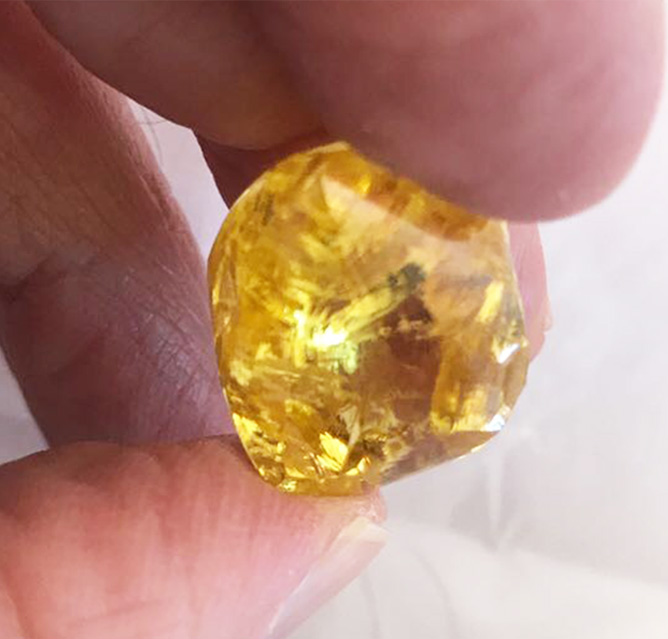
Credit to Sotheby’s Jewels, www.sothebys.com
YELLOW
Yellow diamonds are amongst the most common of all coloured diamonds and are yellow due to the presence of nitrogen. On rare occasions, some are found to exhibit a very strong golden colour – these demand exceptional premiums.
YELLOW
Yellow diamonds are amongst the most common of all coloured diamonds and are yellow due to the presence of nitrogen. On rare occasions, some are found to exhibit a very strong golden colour – these demand exceptional premiums.

YELLOW
Two Golden yellow rough diamonds
waiting to be turned into polished diamonds
One is 11.52 carat and the other 10.73
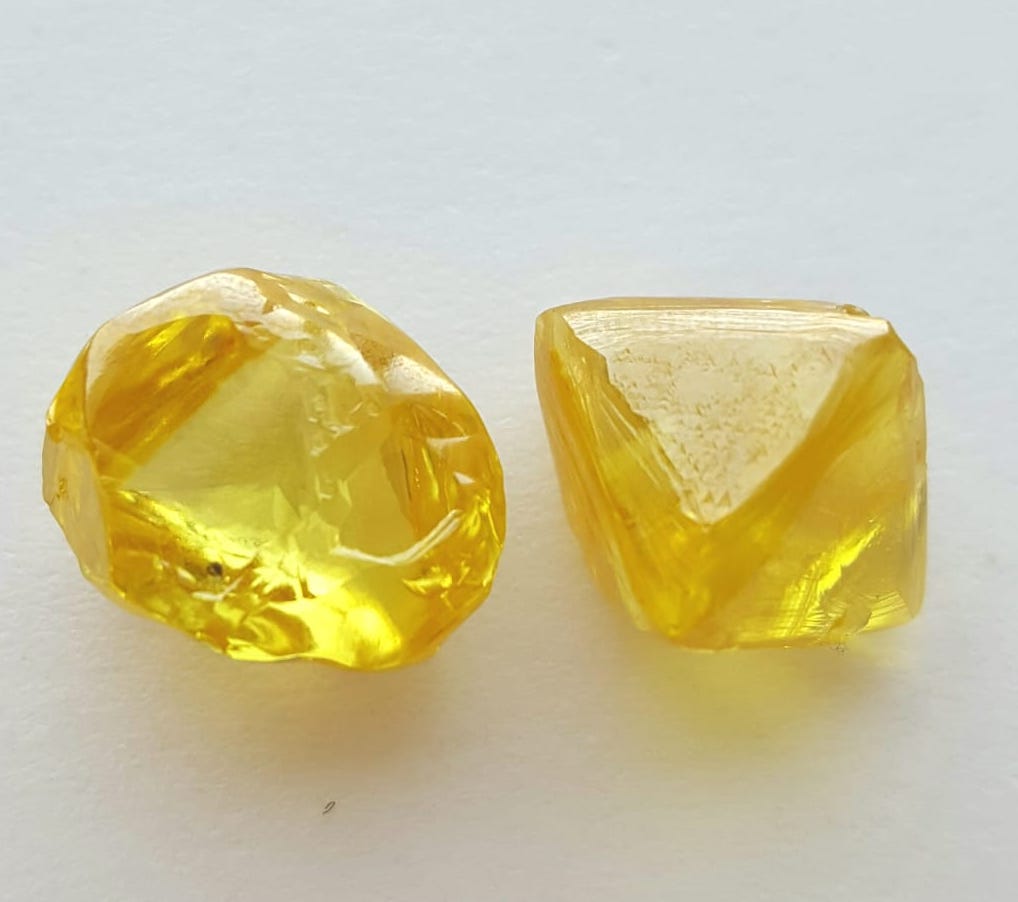
Two Golden yellow rough diamonds
waiting to be turned into polished diamonds
One is 11.52 carat and the other 10.73

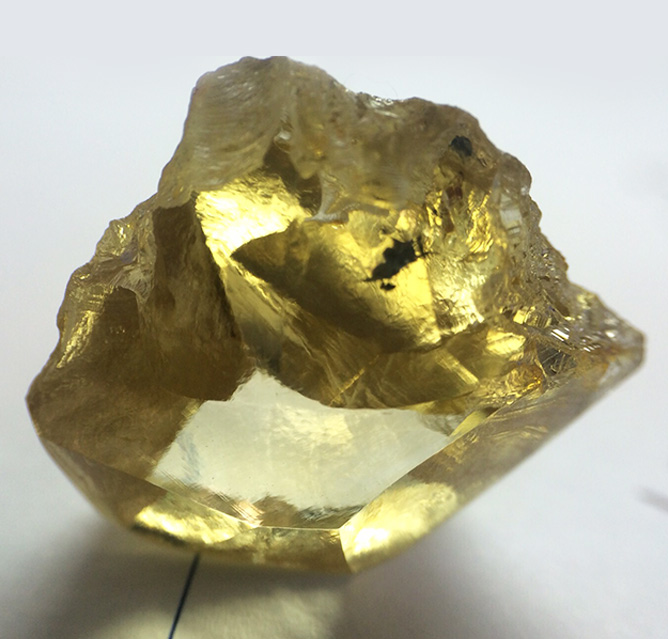
CHAMELEON
Chameleon diamonds portray a rare and magnificent property in which they change colour in different light settings or when heated temporarily. Their base hue is usually green and they can temporarily change to a spectrum of brown and yellow hues.
CHAMELEON
Chameleon diamonds portray a rare and magnificent property in which they change colour in different light settings or when heated temporarily. Their base hue is usually green and they can temporarily change to a spectrum of brown and yellow hues.

BLACK
Black diamond or carbonado is the toughest form of all natural diamonds. Their natural opaque black or dark grey colour is a result of diamond, graphite and amorphous carbon.

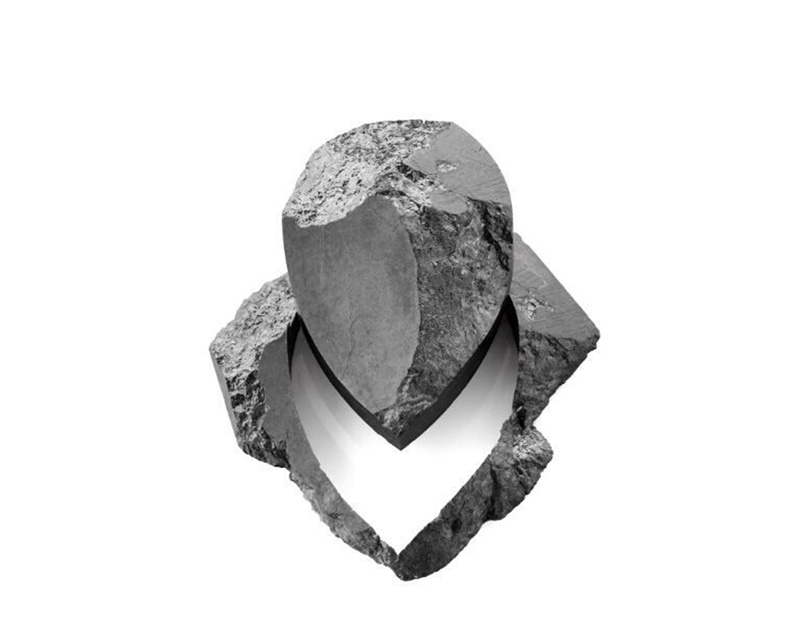
Credit to Diamcad, www.diamcad.be
BLACK
A 2,500 carat carbonado from the Democratic Republic of Congo will yield the largest black polished diamond in the world. Stay tuned for its completion.
A 2,500 carat carbonado from the Democratic Republic of Congo will yield the largest black polished diamond in the world. Stay tuned for its completion.

Credit to Diamcad, www.diamcad.be

